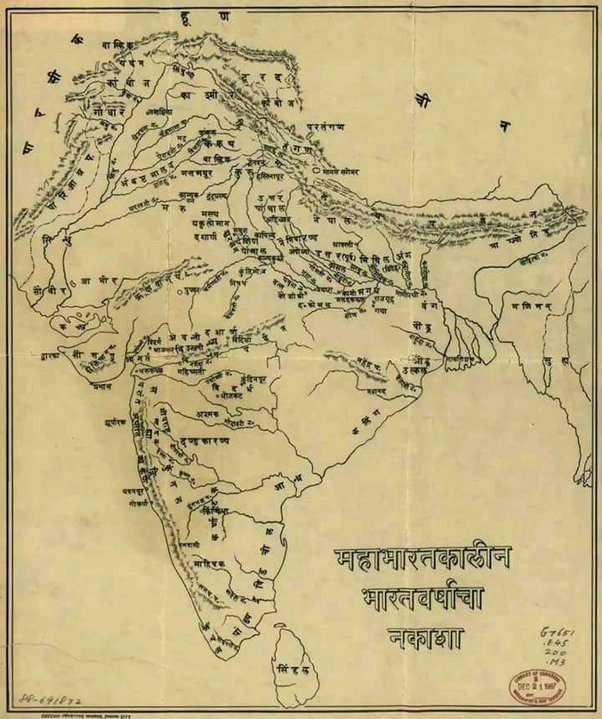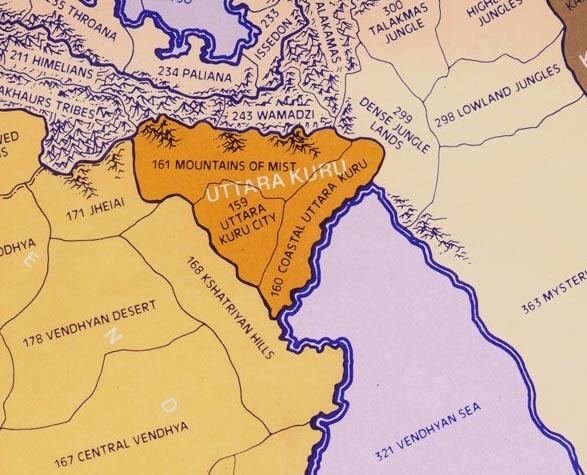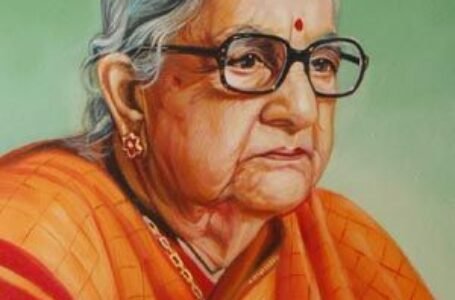MahaJanpada :Kuru – The prosperous and political centre
- Ancient history Asian history
 Bitati Kar
Bitati Kar- September 20, 2022
- 0
- 684

The Vedic Period is the period of the history of India during which all the Vedas and old sacred texts of Hinduism were composed. The Vedic civilization was mainly restricted to the northern and northwestern parts of the Indian subcontinent. During the early phase of the Vedic civilisation, evidence tells that there was the formation of a lot of kingdoms, and in the late phase of this civilization, these kingdoms eventually developed into geo-political societies named Janapadas and Mahajanapadas which were succeeded by the Mauryan Empire. The Vedic era mostly contains a literary legacy instead of a historical one; it is denoted to be the era of culture and languages. However, the literacy legacy does give us accounts of the earliest human societies. There have been claims like this, that the Vedas and lines of those pages describe and represent the oldest known continuous civilization on earth. A lot of evidence has been found that states that the ancient world was a more interconnected space, with links between several continents.

The Vedic period seems to be in link with the Indo-Aryan dispute. According to history, the northern part of India was originally inhabited by darker-skinned people known as Dravidians. It is also pertinent to mention here that it has been said that these people, that is the Dravidians may have founded the Indus Valley or Harappan civilization. However, during 1,500 B.C.E lighter-skinned people invaded India, who were later known as Aryans. The Aryans pushed the Dravidians to the southern part of India and invaded the northern part. The origin of the Aryans could not be exactly traced but is said to have originated from the Iranian regions. According to history some of them moved to the west while some shifted to the east and that is exactly how Indo-European languages came into existence their ancient tongue got mixed up with our culture and are now identified as our linguistic cousins. Another important piece of information presented to us through this vedic history is that the vedas and the ancient Iranian religion have a similar content. The Vedas are ceremonial writings that shaped the premise of the persuasive Brahmanical ideology. They were created in the Kuru realm (an ancestral association of a few Indo-Aryan tribes).

The Kuru was a tribal confederacy in the Northern Iron Age, which included Delhi, Haryana, and Punjab, & appeared in the Karoo society (1200 BC–900 BC). It was an ancient country whose northern part of the himalayas was known as “Uttar Kuru” and southern part was known as “Dakshin Kuru.” It presently lies in the Delhi-Meerut region of India. The mahajanapada of the Kurus also comprised broadly the area of Haryana’s districts of Kaithal, Thanesar, Karnal, Panipat, and Sonepat and the adjoin region of Uttar Pradesh till the Ganga where Hastinapura is located and became the first recorded state-level. It was the main political and cultural centre of the Middle Vedic period. Its first capital was in Sandivat and later its capital was Indapatta. The Kuru kingdom can be understood through the Vedas, which contain the mention of historical events and persons as mentioned above. It is said that Kuru was originally the name of the chieftains (raja kumara) of this country, who later lent their name to the territory. From some of the texts, it appears that the earlier name of Kururattha was Uttarakuru.

According to history, we are told that the men of Uttarakuru had no greed (amama), no private property (apariggaha), had a definite term of life (niyatayuka), and possessed great elegance (visesabhuno) and it was natural for them not to transgress virtue. This mahajanapada is extremely renowned mainly because of its repeated mentions in the Mahabharata as; Kuruzangal, Kuru, Kurukshetra, it has also been read and discovered that these three areas mentioned of the mahajanapada were the main three districts present there. The Kuruzangal was mainly referred to the forested area which stretched from Kamyaka forest which was on the banks of Sarasvati till Khandava forest. On the other hand the Kurushetra part that is the field part stretched from the Khandava forest in the southward direction, Turghna in the northward direction, and Parinah in the westward direction.
The tribes that formed the Kuru mahajanapada, or “Kuru-Pradesh” were mostly semi-nomadic and pastoral tribes or settlements. This however soon changed with time, when the tribes started moving more towards the Gangetic plains, due to the fertility and richness of the soil they soon settled and started farming and growing rice which soon led to the development of other agricultural products. According to the Vedic period there was also emergence of artisans and skilled craftsmen, it was also during this time that iron was first discovered and named as “syama ayas” which means black metal in other words. It has been told in history that the Kuru kings ruled with the assistance of a rudimentary administration, which included priests, village headman and other governing bodies. The Kuru kingdom has a vast contribution towards shaping our culture and religion, it was them who decisively changed the religious heritage of the early Vedic period and arranged them to various hymns and texts which later gained their position in our civilisation as the Srauta rituals.

The Kuru dynasty was formed (1200 BC-900 BC) in the mediaeval period, in the form of an alliance between the Bharata and Puru clans. He had made Kurukshetra his power centre. And in the Vedic period, the Kurus had made their political centre.
This empire changed the religious heritage of the early Vedic period, corrected their ritual hymns in the collection of the Vedas, and developed new rituals. which found their place in Indian civilization as Sraut rituals, which contributed to the so-called classical synthesis or Hindu synthesis.
The Kauravas declined after being defeated by the non-Vedic Salvi. And this centre of Vedic culture moved to the Panchal region. The king was Kesin Dalbhaya, the nephew of the king of the Kuru dynasty. It is said that when Hastinapur was destroyed by the flood and the kingdom of Kauravas also ended. And by the 6th century, this kingdom developed into Kuru and Vatsa, ruling two Arabs.


